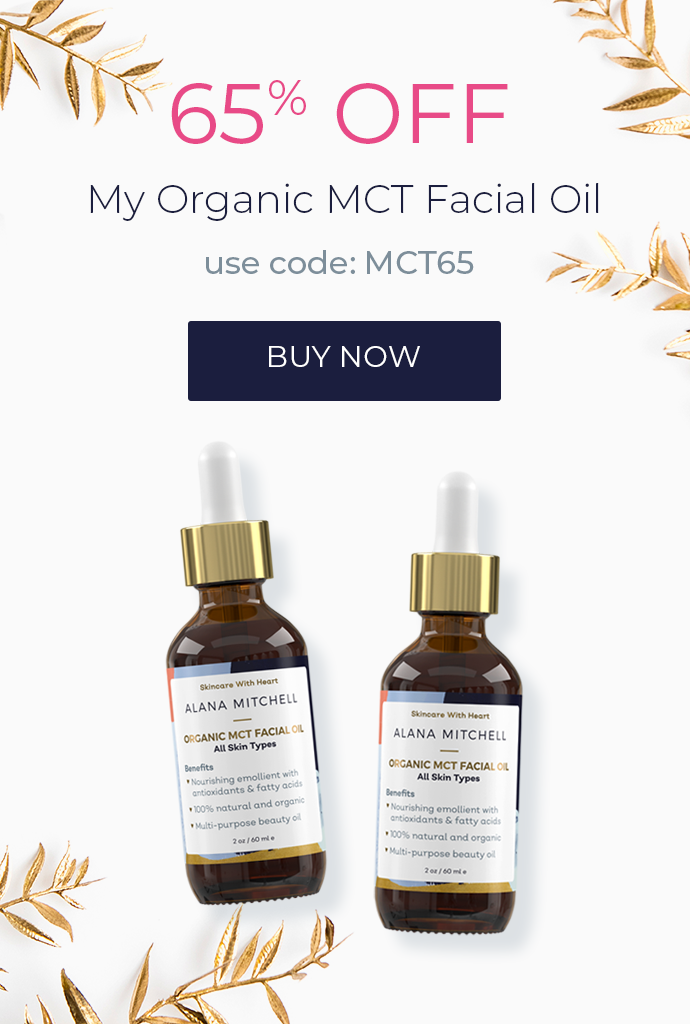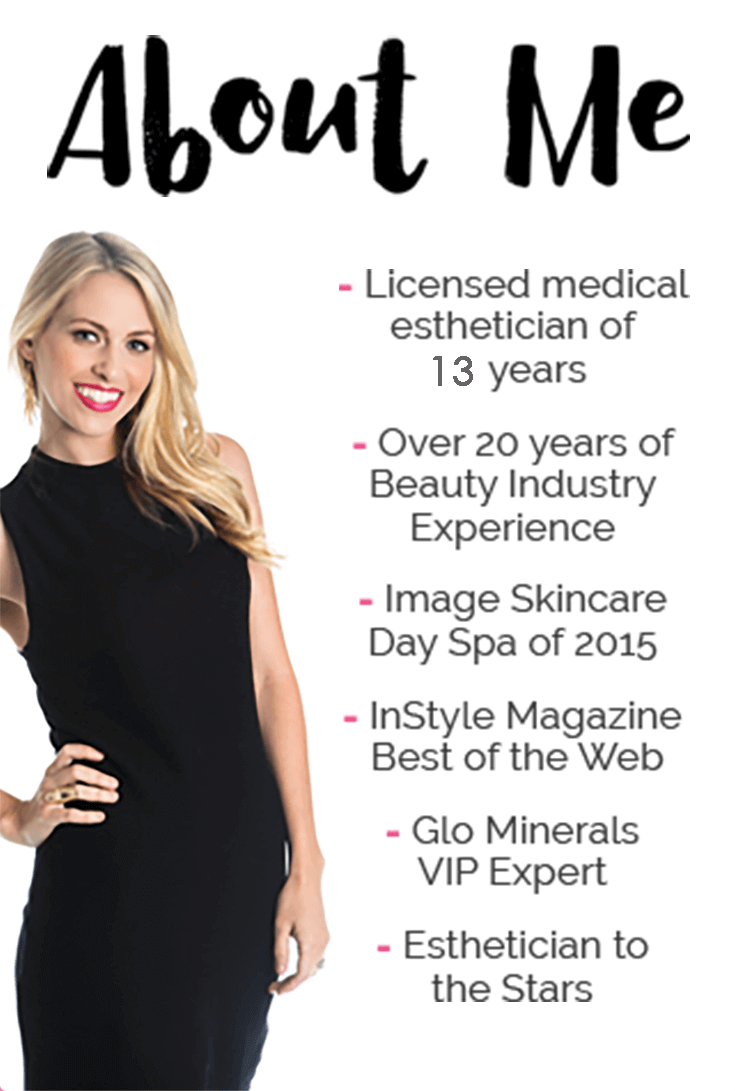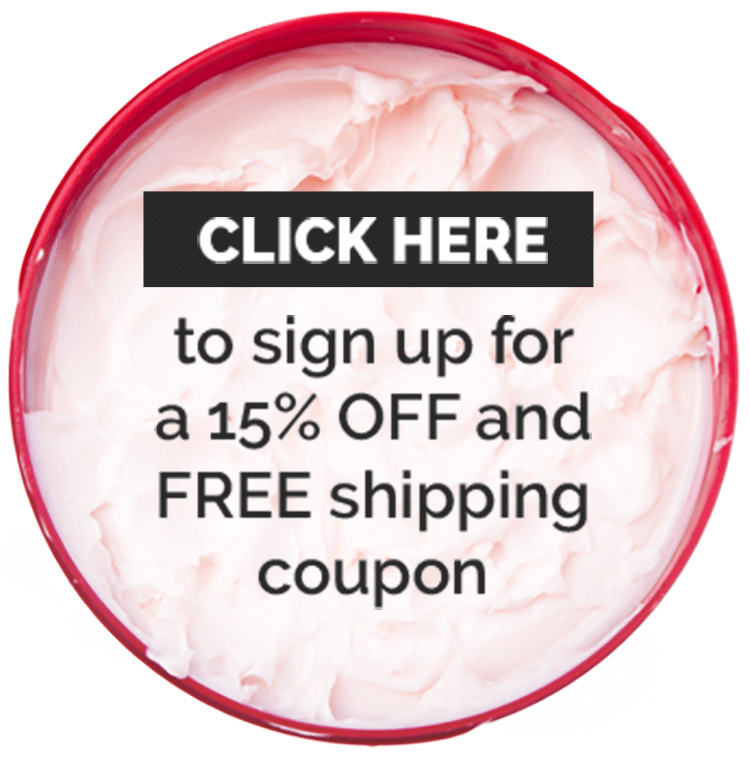What Should You Be Using In Your Skin Care Routine?
Take my quiz and get personalized recommendations from a
licensed esthetician!
Rhonda Allison Pumpkin Series
Rhonda Allison Pumpkin Series
The Rhonda Allison “Pumpkin Series” is an expansive line of Cosmeceutical Products designed to replenish and restore skin - dissolving, softening, and exfoliating dead skin cells.
Using the Science of Chirality and the superior rejuvenating extracts of pumpkin combined with the ingredients of beta-carotene, lactic acid, rose hip oil, omega 6, and glutathione makes the Rhonda Allison Pumpkin Series an effective skin system for many skin types.
Pumpkin Cleanser
A daily “treatment” cleanser that leaves skin squeaky clean using the benefits of L-Lactic Acid for exfoliation and hydration, pumpkin extracts for digestion and antioxidant support, and beta-carotene (antioxidant and photo-protectant).
Pumpkin Lotion
This “treatment” toner adds additional rejuvenating benefits to the skin.
It is designed to freshen and tone skin after cleansing as well as provide a balance of moisture that hydrates and plumps skin tissue.
Due to the naturally-occurring nutrients in pumpkin, the rinse will bathe skin with valuable antioxidant and regenerating support.
Pumpkin Rinse is a valuable second phase cleansing for ultra-sensitive to normal, combination skin types.
It aids in maintaining proper skin pH.
Pumpkin Parfait Enzyme
A mild natural vegetable enzyme that dissolves surface cells, gives the skin a smooth polish, targets melanin, and infuses vitamin A into skin.
Reduces surface build-up, antioxidant, and mild exfoliant – a modified version of Rhonda Allison Pro Peel.
Pumpkin E Serum
Provides vital treatment therapy for oxygen-depleted skin.
The silky, velvety serum glides easily on skin and absorbs quickly, offering a potent supply of antioxidants and valuable hydration support.
Pumpkin - Nature's Own Collagen Therapy
Found to stimulate collagen in the skin, pumpkin is said to be nature’s own collagen therapy.
Inhibiting other factors that would cause the collagen, a major structural component of skin, to deteriorate, pumpkin is naturally high in zinc beta carotene, vitamin C, and Vitamin A.
What exactly is in pumpkin that makes it such a spectacular ingredient?
Look at the following:
- Abscisic Acid: a plant growth hormone that slows the cellular biological clock.
- Adenine: a nucleic acid base that attracts vitamin B into the repair process of DNA damaged by the ultraviolet radiation.
- Adenosine: a sugar of adenine (see#2) which smoothly and uniformly rebuilds subcutaneous fat with the help of niacin attracted by adenine (see#2).
- Alanine: a protein-building amino acid that suppresses crystallization of glucose around protein fibrils.
- Alpha-Amino-Adipic Acid: a protein-building amino acid that greatly strengthens the lysine (essential amino acid) subunits that make up collagen and elastin.
- Amino Butyric Acid (Alpha, Beta, and Gamma): potent inhibitory amino acid also found in the brain. It’s potent, neutral antioxidant properties have been found to inhibit production of super oxygen free radicals in the skin by preventing disconnection with the skin’s natural Spin Traps.
- Arachidic Acid: moisturizing fatty acid also found in sunflowers.
- Arginine: a semi-essential amino acid responsible for “fixing” (securing and concentrating) nitrogen-based Spin Traps in the skin thereby thwarting runaway free radical production. It works with Alanine (see #4) to suppress crystallization of glucose in protein fibrils.
- Ascorbic Acid: Vitamin C, the powerful antioxidant that stimulates the production of collagen/elastin.
- Aspartic Acid: a protein-building amino acid responsible for DNA production supporting all areas of tissue respiration.
- Boron: elemental plant growth factor which is a catalyst for Abscisic Acid’s benefits in skin (see#1).
- Caffeic Acid: cinnamic acid derivative that has a softening effect on pigmentation.
- Calcium: keeps epidermal cell proliferation and differentiation on a healthy, non-malignant path through activation of epidermal calcium-binding protein. This is made possible only through the photosynthesis of pre-vitamin D, which co-activates this protein with calcium.
- Carboxy-Phenylalanine: a moisturizing fatty acid form of protein-building amino acid phenylalanine.
- Beta-Carotene: antioxidant pro-vitamin.
- Chromium: a mineral that improves RNA structure and function, helps in the prevention of A.G.E.
- Citrulline: an amino acid that improves the communications between the skin and the liver.
- Cobalt: an important bio-element and co-enzyme component which increases nitrogen access for the production of Spin Traps in the realignment of free radical processing.
- Copper: important bio-element involved in radical-free oxygen transport from blood to skin.
- Codecarboxylase: Vitamin B-type co-enzyme that removes carbon dioxide from the more sensitive tissue-respiratory mechanisms (preventing age-related “smothering” effect).
- Crypto-xanthin: an escort carotenoid that improves the activity of beta-carotene.
- Cucurbic-acid: amino acid with anti-biotic effects, unique to pumpkin family.
- Cucurbita-xanthin: unique pumpkin carotene that is more antioxidant than beta-carotene.
- Cucurbitin: an anti-cancer sugar unique to pumpkin family.
- Cucurbitol: a watermelon seed-type fatty alcohol, which improves moisture retention in skin.
- Cysteine: a sulfur-containing, protein-building amino acid, which improves the efficiency of oxidation-reduction reactions in the epidermis. Moderates and mediates melanin dispersal.
- Dehydroascorbic Acid: the reversibly oxidized form of ascorbic acid, having the same vitamin C activity as ascorbic acid.
- Edistine: globular protein similar to those found in hemp seed. Improves water circulation through cell walls in skin.
- Alpha-Ethyllathosterol: amino acid sterol having a conditioning effect on skin.
- Ethyl-alpha-cholestadien-beta-oil: cholesterol derivative with smoothing effect on subcutaneous fat.
- Ferulic Acid: derivative of caffeic acid, enhancing effects of caffeic acid (see#12)
- Fiber: cleansing and micro-filtration of epidermis.
- Flavoxanthin: carotenoid pigment with potent beta-carotene antioxidant properties.
- Gibberellin: plant growth hormone that promotes healthy epidermal cell differentiation.
- Glutamic Acid: protein-building amino acid promotes synthesis of NaPCA in skin for greatly enhanced moisture retention.
- Glutinol: a form of glutathione with particularly potent free radical neutralizing effects.
- Glycine: the simplest of all protein-building amino acids, a part of the glycolic acid cycle, provides nitrogen from the production of the body’s natural Spin Traps.
- Glyoxalic Acid: glycine derivative, pro-allantoin compound. Important for tissue respiration.
- Guanosine: a guanine-based sugar essential to healthy cell metabolism.
- Histidine: an essential protein-building amino acid that is the catalytic center of many enzymes. Improves skin’s immune system.
- Hydroxy-Brenztrauben Acid: pumpkin’s version of pyruvic acid, helpful in metabolizing age-induced sugar-crystal cross-linking of collagen/elastin fibrils.
- Hydroxy-Butyric Acid: fatty acid that increases solubility of skin waste-products in sweat. Improves skin’s self-cleaning.
- Delta-Hydroxylysine: essential amino acid derivative, important for the uptake of skin’s immune cells originating in bone.
- Iron: an essential bio-element which is a catalyst for oxidation-reduction reactions responsible for communication between dermal and epidermal cells.
- Iso-Leucine: essential amino acid, which improves the activities of #41 and #42.
- Iso-Rhamnetin-Rutinoside-Rhamnoside: this is a mannose sugar plant pigment related to quercetin that improves the mannoprotein-enhancement of the skin’s immune system. The result is excellent capillary protection! Powerful flavonoid antioxidant.
- Kaempferol: plant flavonoid (plant pigment not in carotene group) related to #46; gives some protection from ultraviolet radiation. Powerful antioxidant.
- Alpha-Keto-Beta-Methyl-Butyric Acid: related to #6 and #42, combined effects.
- Alpha-Keto-BetaMmethyl Valerainic Acid: valeric acid derivative, similar to valerian extract. Anti-neoplastic fatty acid.
- Lauric Acid: fatty acid often found in spermaceti. Emollient.
- Lecithin: phospholipid (phosphatidylcholine), basic constituent of bio-membranes for lipid integrity.
- Leucine: (see #45 and #28), improves utilization of Edestine. A valeric acid-type compound essential to the citric acid (Krebs) cycle for cellular energy production with low free radical evolution.
- Linoleic Acid: essential fatty acid helpful in the implementation of phospholipids.
- Alpha-Linolenic Acid: essential fatty acid that improves utilization of glycerophospholipids like lecithin.
- Lupeol: sterol with surfactant properties that aid in the cleansing of skin.
- Lutein: a xanthophyll, one of the most widespread carotene alcohols in nature; similar emolliency as egg yolk; powerful antioxidant.
- Lysine: essential protein-building amino acid; growth-promoter.
- Magnesium: bio-element, which encourages the proliferation of keratinocytes.
- Manganese: bio-element, which improves the integrity of the cyto-skeleton, i.e. the epidermal cells’ tubular scaffolding.
- Mannitol: a derivative of mannose sugar, the energy unit driving mannoprotein’s use by the skin’s immune system.
- Methionine: sulfur-containing essential protein-building amino acid; derived from cysteine (see#26). Improves co-enzyme presence in utilizing activated or “methylated” collagen and elastin. Linked to vitamin B activity in cell differentiation.
- Myristic Acid: emollient fatty acid.
- Neoxanthin: a xanthophyll (see #56). A carotene with antioxidant effects.
- Niacin: vitamin B group (see #61, 20, and 3) for a role in skin.
- Oleic Acid: most widely distributed unsaturated fatty acid; a component of phospholipids. Makes skin more receptive to the benefits of other fatty acids.
- Ornithine: catalyst in the urea cycle in which this amino acid helps convert waste nitrogen into non-toxic, soluble urea. Typically, it tightens the communication links between skin and liver.
- Oxalic Acid: a carboxylic acid produced in the body by ascorbic acid metabolism. Topical traces condition the skin to be more receptive to alpha hydroxy acid treatments.
- Oxycerotinic Acid: saturated fatty acid with evening effects on pigmentation.
- Palmitic Acid: fatty acid commonly used in cosmetic formulations.
- Palmitoleic Acid: unsaturated fatty acid-enhancing epidermal nutrient effects of topical phospholipids, along with palmitic acid.
- Phenylalanine: essential protein-building amino acid, the precursor to melanin. Improves skin’s melanization response time.
- Phospholipids: pumpkin’s answer to ceramides.
- Phosphorus: bio-element improves photosynthetic conversion of pro-vitamin D in skin. Suppresses the number of errors in transcription of particular genes in skin, thereby promoting healthier skin-renewal.
- Phytic Acid: known as “myo-inositol.” This is a phosphoric acid compound that sharpens the skin’s cellular response to external stimuli such as hormones. It greatly utilizes pumpkin wine’s calcium and magnesium content to achieve this.
- Phytosterols: plant steroids in alcohol form. These promote healthy enzyme levels in the epidermis, responsible for lipid replenishment and barrier repair in the stratum corneum.
- Potassium: bio-element; important role in the genesis and correction of imbalances of acid-base metabolism resulting from chemical peels.
- Proline: protein-building amino acid essential to collagen production.
- Protein: unique sequences of amino acids characteristic of pumpkin family (including squash and gourds). Mesh well, like compatible gears, with skin proteins.
- Quercetin: (see #46) plant pigment, which protects dermal capillary bed and reduces incidence of visible facial capillaries. Potent flavone antioxidant.
- Rhamnazin Rutinoside: see #46.
- Riboflavin: vitamin B group.
- Salicylic Acid: beta hydroxy acid. Pumpkin has the highest natural concentration of salicylic acid of any plant. It is a natural Spin Trap.
- Selenium: powerful physiological anti-oxidant comparable to glutathione in potency, especially pumpkin-based selenium that is complexed with natural carotenoids for extra power.
- Serine: a protein-building amino acid that is the major component of “pumpkin silk.”
- Silicon: essential trace element in human nutrition. This mineral is responsible for the linking of mucopolysaccharides to protein in the skin (and throughout the body) and thereby “fixing” (concentrating) them where they are most needed.
- Beta-Sitosterol: (see #75). This is the most potent of the phytosterols (plant steroids). Much safer than animal steroids.
- Sodium: (see #76).
- Alpha-spinasterol: spinach-type steroid which strengthens desmosome fibers connecting skin cells (has an overall firming effect).
- Stearic Acid: Fatty acid commonly used in skin care as a moisturizing vehicle.
- Alpha-Stigmastadien-Beta-0il: (similar to #88). Targets the granular layer of the epidermis, making the membrane coat more pliable.
- Stigmastenol: (like #90). Imparts horizontal integrity to the filaments of the epidermal spinous layer.
- Stigmastenyl-glucoside: a “sweet” steroid of the phytosterol group. This has a lubricating effect on the keratohyalin, the protein matrix that supplies the scaffolding for epidermal keratin fibers.
- Sucrose: suppresses crystallization of glucose around collagen and elastin fibrils.
- Thiamin: Vitamin B-1 (see #41). This vitamin maintains the stability of pyruvic acid-type compounds in supplying ATP (cellular) energy to the anti-aging process.
- Threonine: an essential protein-building amino acid that suppresses age-related cross-linking of collagen and elastin fibers at the sites of the amino acid glycine.
- Alpha-Tocopherol: Vitamin E; prevents the spontaneous oxidation (damage) of the skin’s lipid layer.
- Trigonelline: metabolite of vitamin B-2 complex. Both a hormone and storage form of this vitamin. Riboflavin-type effects in the preservation of skin around eyes, lips, and nose.
- Tryptophan: essential amino acid, vitamin B precursor which suppresses hyperpigmentation along with associated hyperkeratosis and scaling when used topically.
- Tyrosine: protein-building amino acid, a precursor of melanin. Improves communication between skin and thyroid gland, which is essential in mediating any vitamin-A effects in the skin (carotenoids to retinoids).
- Valine: essential protein-building amino acid. Boosts antibacterial pathways of skin.
- Viola-xanthin: very important plant carotenoid. Extremely powerful antioxidant.
- Xanthophyll: the most stable plant pigment carotenoids. These are carotene-proteins that are powerful antioxidants.
- Zea-xanthin: carotene-based plant pigment. Extremely potent antioxidant (xanthophyll group).
104. Zinc: essential bio-element. The catalyst in the topical activity of Tryptophan. Protects from cutaneous erosion and peripheral edema associated with deficiencies in riboflavin.
Top Brands
New Brands

Recent Posts

Are You Taking the Right Steps to Care for Your Skin?
Take the Quiz
Skincare Secrets!
10-step guide for healthy, beautiful skin after kids.
100% privacy. I will never spam you!













